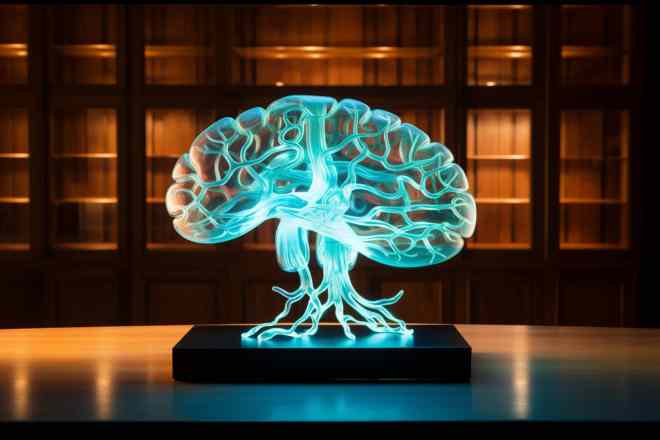Customer relationship management (CRM) is a critical tool for businesses in today’s competitive environment. With a CRM, you have the autonomy to understand, engage with and deliver more value to customers than without one. Yet, one thing that’s certain is that it’s more than a system you set and forget. The customer relationship management process requires marketers to continuously refine them to increase efficiency, retain customers, and, ultimately, improve the bottom line.
To ensure you’re taking the steps for greater efficiency and improved customer service, consider following this step-by-step guide to streamline your CRM process.
What is the Customer Relationship Management (CRM) Process?
The CRM process is a strategic approach companies use to manage all interactions and relationships with customers. It usually unfolds in several key stages:
- Identification of potential leads.
- Attraction of new customers.
- Maintaining and enhancing relationships with existing customers.
- Winning back former customers.
Within these stages, the basic components of a typical customer relationship management process include data collection, data analysis, marketing automation, interaction tracking and customer service.
However, a CRM does come with challenges. Companies often deal with data overload, as they accumulate enormous amounts of customer data. This data can be overwhelming to manage, analyze and transform into actionable insights.
Moreover, the complexity of the CRM process can sometimes lead to inefficiencies, creating bottlenecks that slow down customer response times and negatively impact customer satisfaction. These issues, among others, signify the need to streamline the CRM process, allowing businesses to serve their customers better and achieve goals.
The Importance of Evaluating Your Current CRM Process
Before you begin streamlining your CRM process, understanding the state of your current system is crucial. Evaluating a CRM’s efficiency, ease of use and overall effectiveness is a vital step in this journey.
For instance, efficiency is how well your CRM helps you manage customer interactions. Your team may spend too much time on data entry or finding customer information. If that’s the case, your processes may be hindering productivity.
Ease of use is another critical aspect. A user-friendly CRM increases adoption rates among your staff and reduces training time. It should be intuitive, easy to navigate and accessible across devices.
Assessing effectiveness involves examining how well your CRM helps achieve your business objectives. Have you seen improved customer retention or increased sales since implementing your CRM? If not, consider some changes.
When evaluating your CRM, look for signs of data silos, outdated customer information or poor integration with other business systems. These can all indicate areas where your CRM process could be improved.
The Steps to Streamlining Your Customer Relationship Management Process
Now that you better understand the customer relationship management process and the importance of evaluating, utilize these steps to start streamlining it more effectively.
Step 1: Conduct a Thorough CRM Audit
The first step to streamlining is understanding your current CRM system’s strengths and weaknesses. That way, you have a better outlook on the downfalls that you’re currently facing and the things you must work on to enhance them.
Begin by conducting a comprehensive audit. Review how you collect, store, analyze and use customer data. Look at your workflows, user experience and integrations. Identify any bottlenecks, data redundancies or any other potential issues.
Step 2: Identify Areas of Improvement
The results you’ve gained from your audit will allow you to pinpoint areas for improvement. These could range from data management, user interface, customer service effectiveness and team communication.
When identifying new areas of improvement, be as specific as possible since it’ll help you address the issues more efficiently.
Step 3: Establish Clear CRM Goals
The next step is clearly defining what you want to achieve with your streamlined CRM process. Are you aiming for faster response times, more accurate customer data or improved marketing ROI? Establishing clear goals and KPIs will provide direction and enable you to measure progress more successfully.
Step 4: Simplify Data Entry Processes
Overly complex data entry can lead to errors and inefficiencies. Consider simplifying forms and reducing unnecessary fields. You can achieve this by leveraging drop-down menus and automatic field populations wherever possible to speed up the process and improve accuracy.
Step 5: Automate Where Possible
Automating can make a greater difference in your CRM process. Start identifying repetitive tasks, like sending follow-up emails or updating customer records and automate them. This will ensure you save time and maintain consistency in your customer interactions.
Step 6: Integrate With Other Business Systems
Integration is one of the most important steps to streamlining the customer relationship management process. Your CRM system should communicate with other business systems like marketing, sales and service software. That way, you ensure a seamless flow of data across the organization, reducing data silos and enhancing decision-making.
Step 7: Train Staff and Implement Changes
Once you’ve redesigned your CRM process, it’s time to train your team. Conduct workshops, provide manuals and offer continuous support. Then, implement the changes. Be open to feedback and be prepared to make adjustments along the way.
Step 8: Monitor and Measure Performance
Once streamlining takes place, it’s vital that you monitor and measure your outcomes by implementing the metrics aligned with your goals. Start with using analytic tools to track progress and performance. Then, consistently compare your metrics with your established CRM goals to ensure you’re on the right track.
Regular monitoring will also help identify any new bottlenecks or areas for further improvement. However, you must remember that streamlining is an ongoing process and should involve continuous monitoring and adjusting to maintain effectiveness and efficiency.
An Example Scenario for Streamlining the CRM Process
Let’s consider a scenario for a mid-sized e-commerce company struggling with a cumbersome CRM process. Its issues lie in scattered customer data, slow response times to customer inquiries and inefficient data entry tasks.
Throughout its audit, it finds customer data spread across different systems, and customer service representatives have to check multiple databases to answer queries. Based on its audit, its key areas for improvement include data centralization, faster response times and reduced manual data entry.
Its next step would be to set clear goals such as centralizing customer data into one system, reducing response times to under one hour and automating data entry tasks. To streamline these processes, the company should take steps to restructure its data entry forms, remove redundant fields and so forth.
Then, it would automate wherever possible for follow-up emails and updated customer records to ensure the team focuses on customer interactions. The company would also integrate its CRM with its existing sales and customer service systems, enabling a seamless flow of data across platforms.
Finally, it can conduct staff training on the new CRM processes and roll out changes. Once the staff is used to these new changes, the company can consistently monitor response times, data entry accuracy and customer satisfaction levels. By regularly reviewing its metrics and comparing them to the CRM goals, it can adjust its strategy as needed and continue to deliver on its business objectives.
Optimize Customer Relationship Management Processes for Business Success
Streamlining the customer relationship management process is an invaluable step toward enhancing efficiency and boosting customer satisfaction. Yet, one thing to remember is that this is an ongoing journey of refinement and improvement. Keep evaluating and tweaking your CRM process to adapt to changing business needs and customer expectations. Doing so will improve your system and shape the future of your business.


